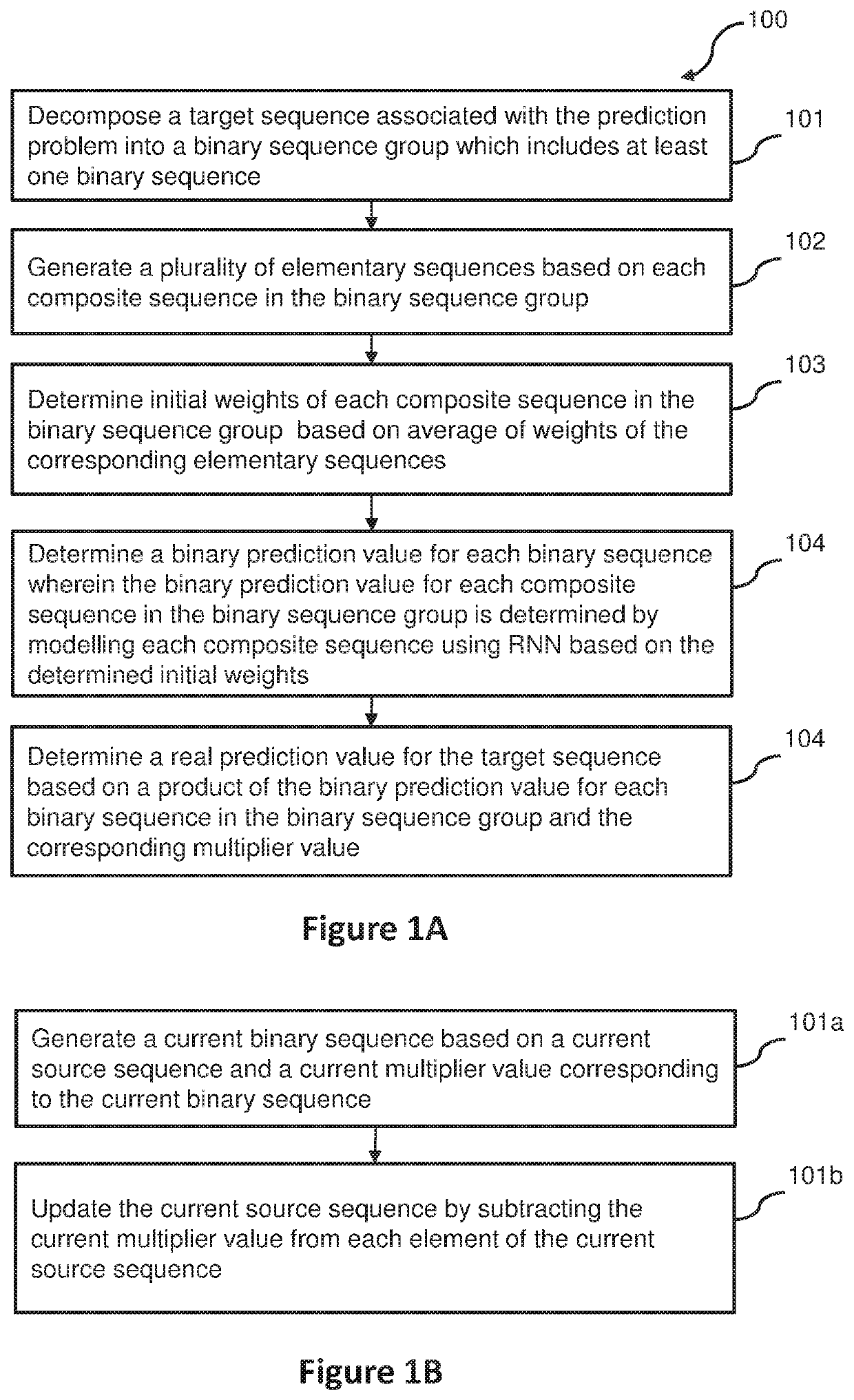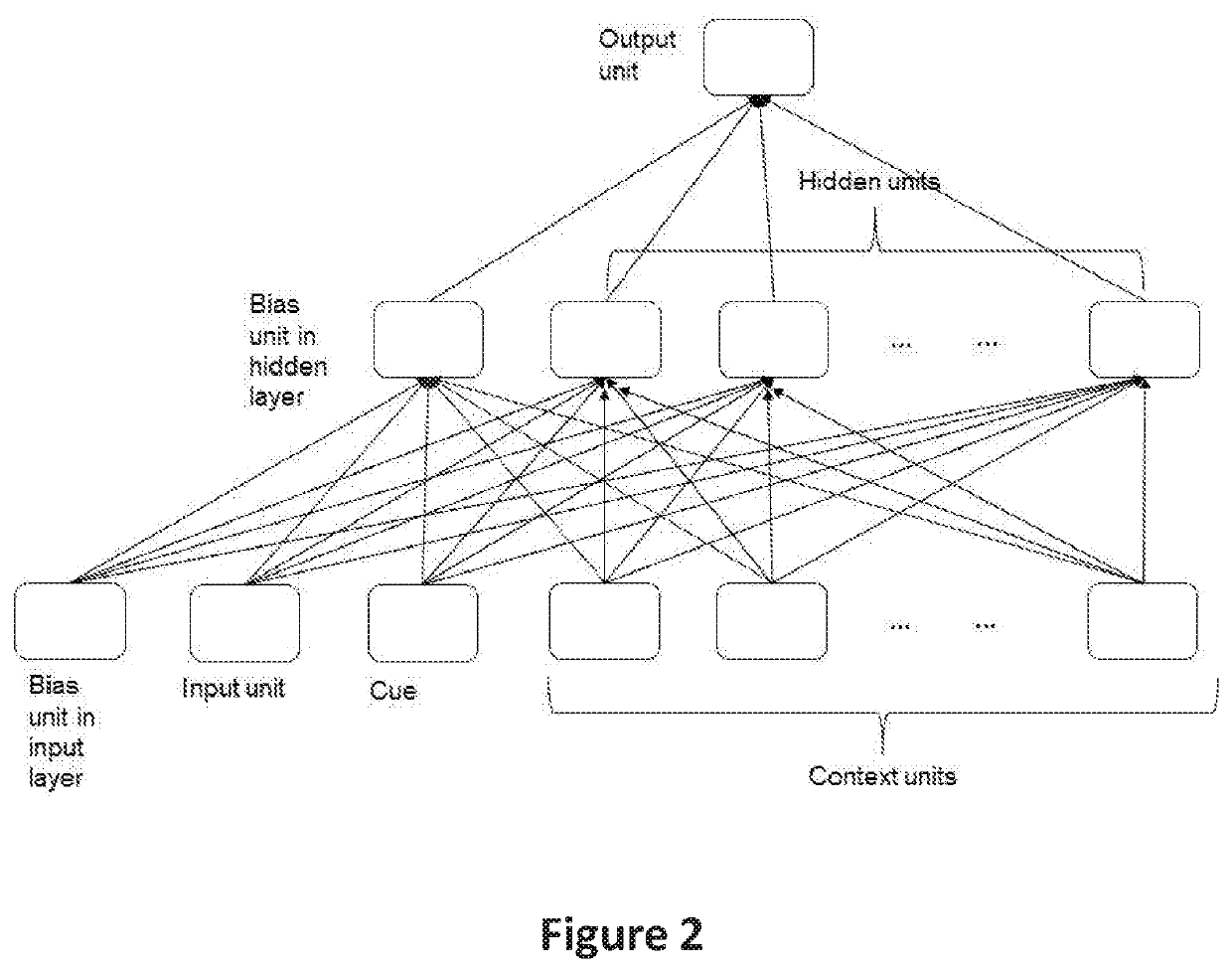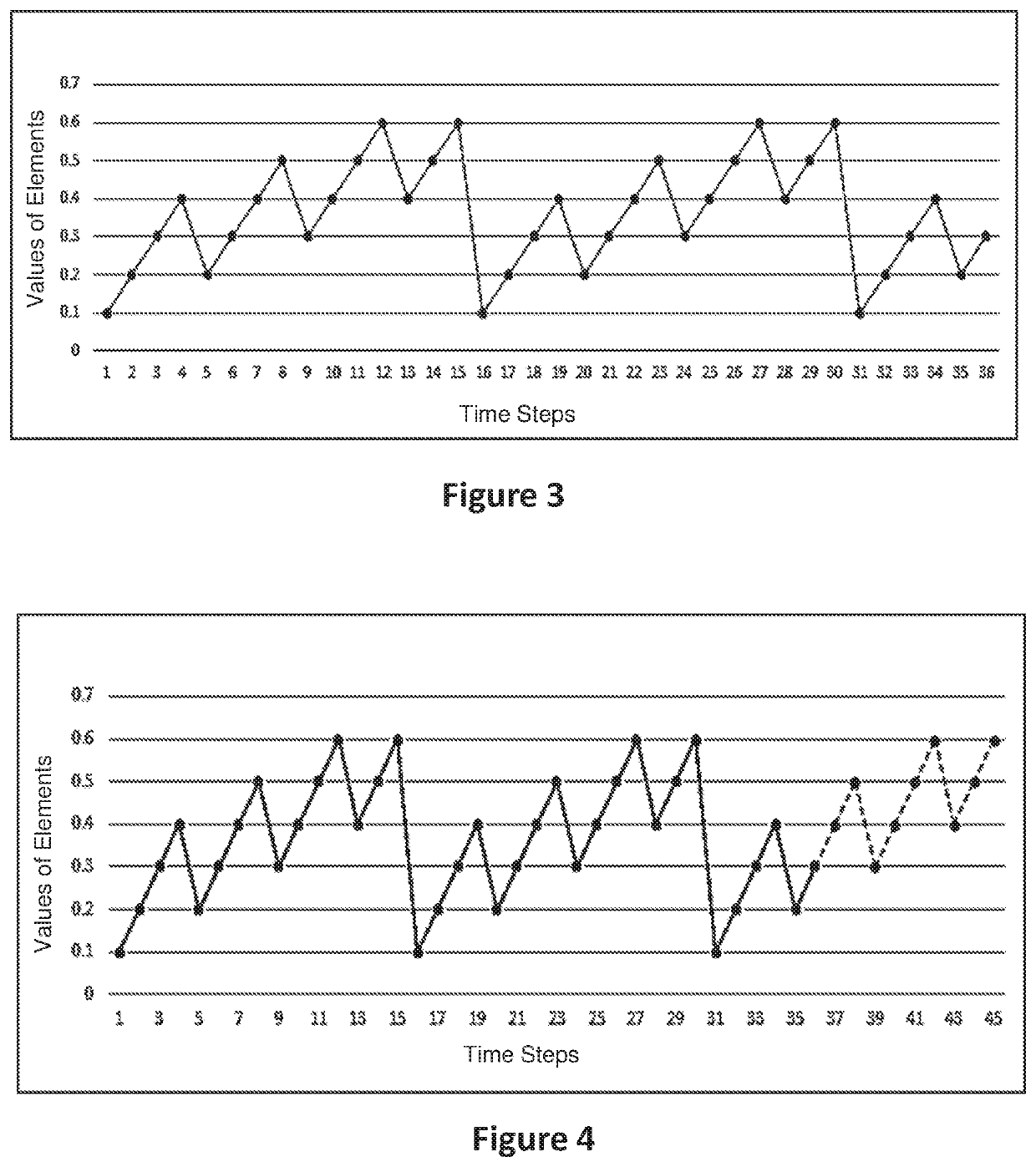Method and system for solving a prediction problem
a prediction problem and method technology, applied in the field of sequence prediction, can solve the problems of large temporal dependencies of standard rnns, complex algorithms, and the need for specialized network structure, so as to reduce the computation time required for prediction and reduce convergence time.
- Summary
- Abstract
- Description
- Claims
- Application Information
AI Technical Summary
Benefits of technology
Problems solved by technology
Method used
Image
Examples
examples
[0099]For illustrative purpose, the following examples are provided to further explain the method and system for solving a prediction problem proposed in embodiments of the invention.
example-1
[0100]A first target sequence associated with the prediction problem in this example is as follows:[0101]{0.1, 0.2, 0.3, 0.4, 0.2, 0.3, 0.4, 0.5, 0.3, 0.4, 0.5, 0.6, 0.4, 0.5, 0.6, 0.1, 0.2, 0.3, 0.4, 0.2, 0.3, 0.4, 0.5, 0.3, 0.4, 0.5, 0.6, 0.4, 0.5, 0.6, 0.1, 0.2, 0.3, 0.4, 0.2, 0.3}
[0102]In the first target sequence, the first fifteen elements have been repeated twice. FIG. 3 is a line graph showing variation of elements in the first target sequence over time according to Example-1.
Generate Binary Sequence Group
[0103]The first target sequence may be converted into the binary sequence group based on the predetermined multiplier values as shown in Table 3 below.
TABLE 3Binary sequence GroupMultiplier value11 1 1 1 1 1 1 1 1 1 1 1 1 1 1 1 1 1 1 1 1 1 1 1 1 1 1 1 1 1 1 1 1 1 1 10.120 1 1 1 1 1 1 1 1 1 1 1 1 1 1 0 1 1 1 1 1 1 1 1 1 1 1 1 1 1 0 1 1 1 1 10.130 0 1 1 0 1 1 1 1 1 1 1 1 1 1 0 0 1 1 0 1 1 1 1 1 1 1 1 1 1 0 0 1 1 0 10.140 0 0 1 0 0 1 1 0 1 1 1 1 1 1 0 0 0 1 0 0 1 1 0 1 1 1 1 1...
example-2
[0128]In the second example, the proposed prediction method is applied to a sequence which is not perfectly repeating and more representative of real life situations. The objective is to prove how well the real life prediction problem can be solved using the proposed prediction method.
[0129]A second target sequence in this example is as follows:
{0.1, 0.2, 0.3, 0.4, 0.2, 0.3, 0.4, 0.5, 0.3, 0.4, 0.5, 0.6, 0.4, 0.5, 0.6, 0.1, 0.2, 0.3, 0.1, 0.2, 0.3, 0.4, 0.2, 0.3, 0.4, 0.5, 0.6, 0.3, 0.5, 0.6, 0.1, 0.2, 0.3, 0.4, 0.2, 0.3}
[0130]FIG. 5 is a line graph showing the variation of elements of the second target sequence over time according to Example-2. As shown in FIG. 5, the elements of the sequences do not form a perfect pattern over time but an overall trend can be identified.
Generate Binary Sequence Group and Elementary Sequences for Each Composite Sequence
[0131]A binary sequence group is generated based on the second target sequence and the corresponding multipliers. In other words, t...
PUM
 Login to View More
Login to View More Abstract
Description
Claims
Application Information
 Login to View More
Login to View More - R&D
- Intellectual Property
- Life Sciences
- Materials
- Tech Scout
- Unparalleled Data Quality
- Higher Quality Content
- 60% Fewer Hallucinations
Browse by: Latest US Patents, China's latest patents, Technical Efficacy Thesaurus, Application Domain, Technology Topic, Popular Technical Reports.
© 2025 PatSnap. All rights reserved.Legal|Privacy policy|Modern Slavery Act Transparency Statement|Sitemap|About US| Contact US: help@patsnap.com



